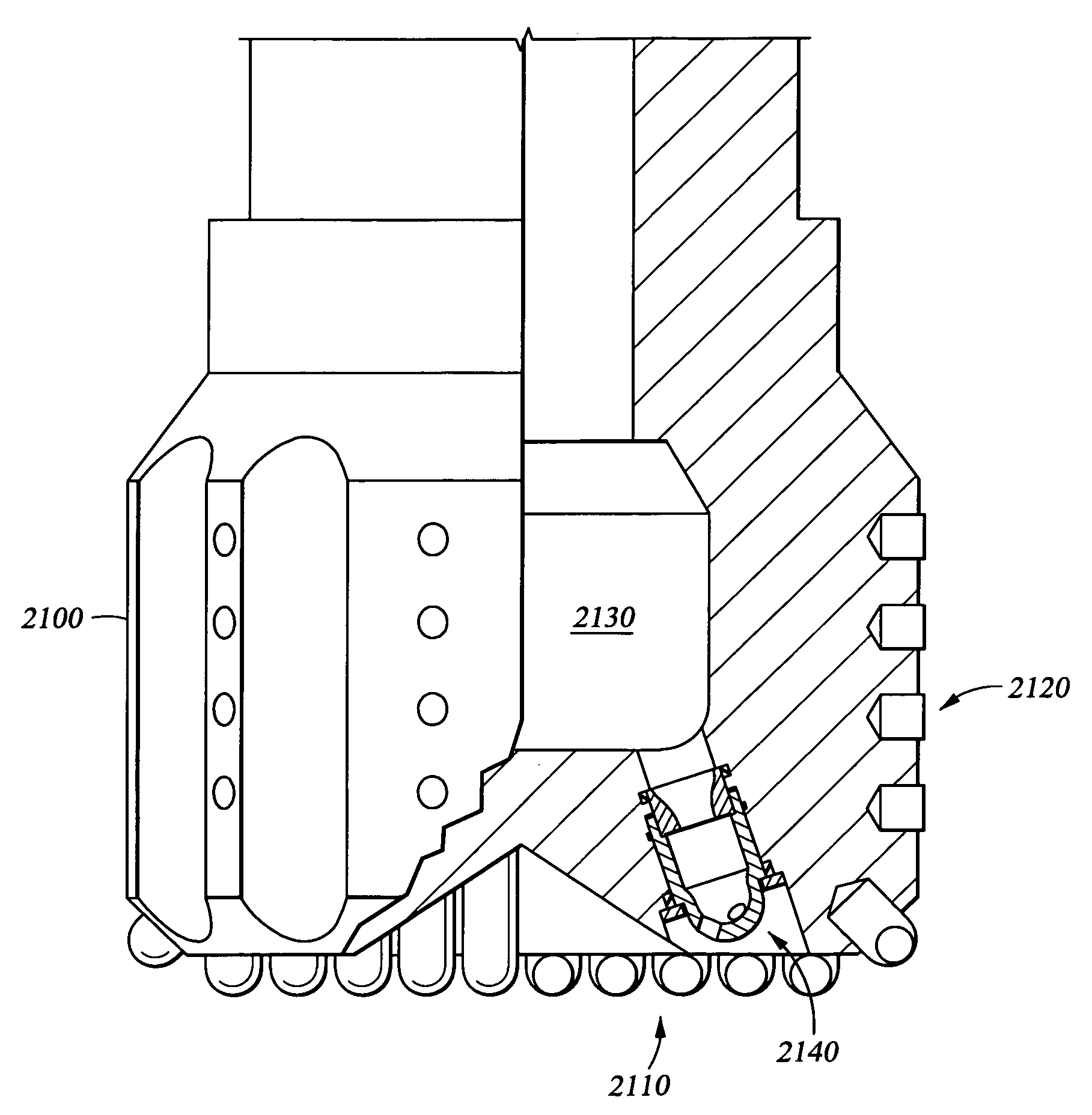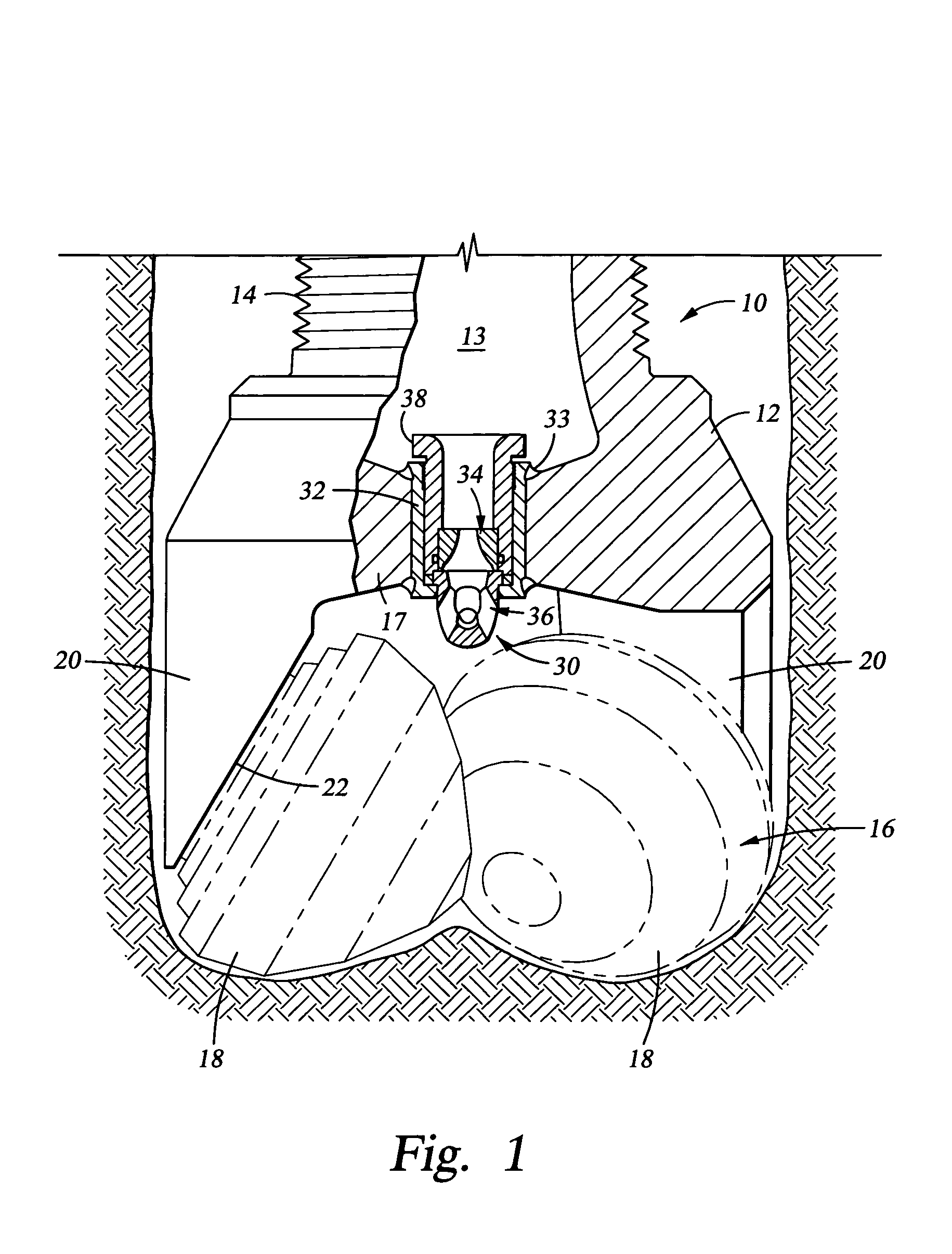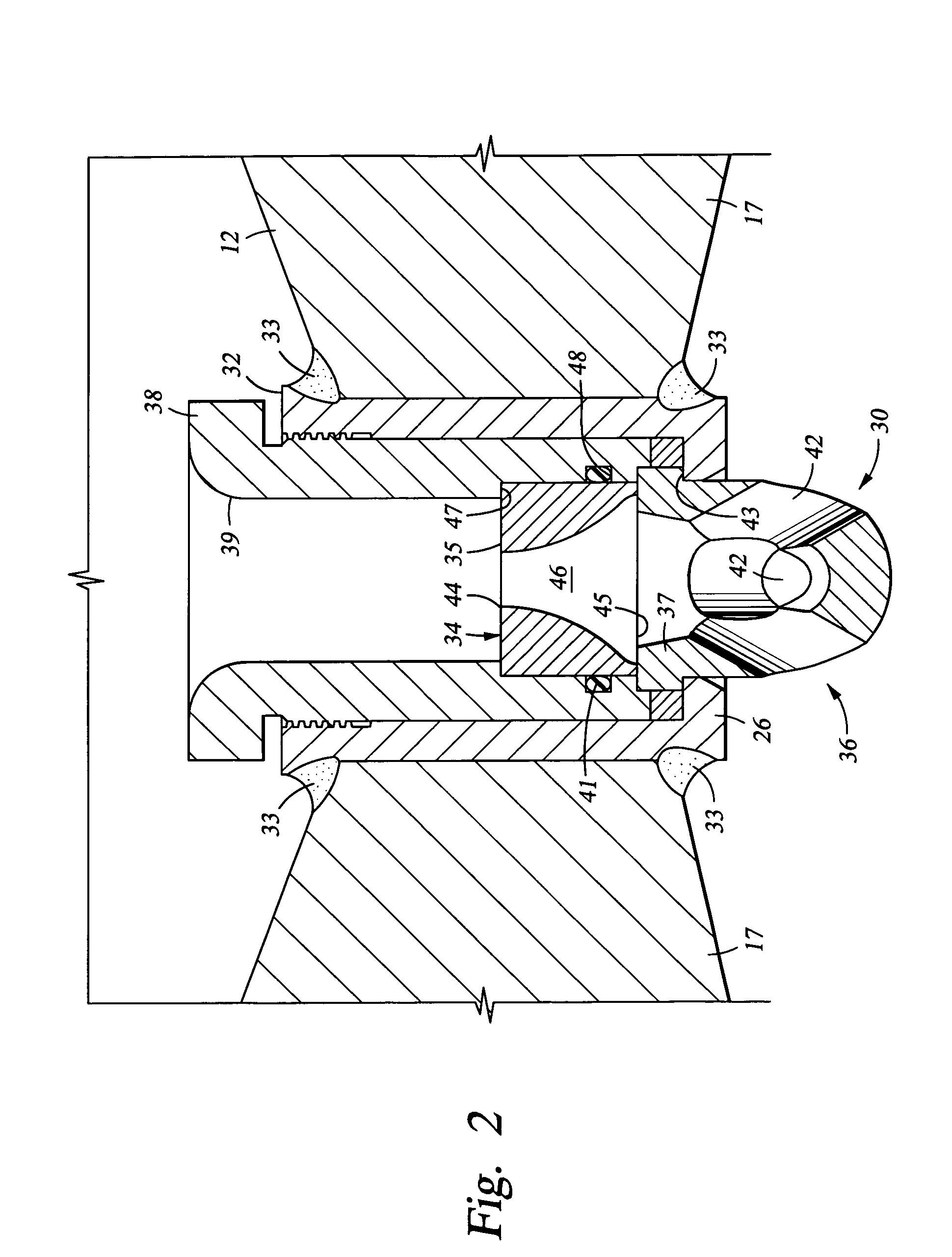Multi-stage diffuser nozzle
a diffuser and multi-stage technology, applied in the direction of drilling machines, cutting machines, constructions, etc., can solve the problems of premature failure of the rock bit, excessive erosion of the cone shell and other components, and unusable recirculation paths, so as to improve the penetration rate of the drill bit and improve the cleaning effect of the cone shell
- Summary
- Abstract
- Description
- Claims
- Application Information
AI Technical Summary
Benefits of technology
Problems solved by technology
Method used
Image
Examples
Embodiment Construction
[0046]With reference now to FIG. 1, rotary cone rock bit generally designated as 10 consists of rock bit body 12, pin (upper) end 14 and cutting (lower) end generally designated as 16. A fluid chamber or plenum 13 is formed within bit body 12. The plenum 13 communicates with open pin end 14. Drill bit fluid or “mud” enters the bit body through the pin 14 via a drill pipe attached to the pin (not shown). A dome portion 17 defines a portion of the plenum 13 within body 12. Rock bit legs 20 extend from bit body 12 toward the cutting end 16 of the bit. A cutter cone 18 is rotatably fixed to leg 20 through a journal bearing extending into the cone from the leg backface 22 of the leg 20 (not shown).
[0047]Also shown is a multi-stage diffuser nozzle 30 according to a first embodiment of the invention. The multi-stage diffuser nozzle 30 of FIG. 1 generally includes two components, an upper flow restrictor 34 stacked on top of a lower fluidic distributor 36. Fluidic distributor 36 and flow re...
PUM
 Login to View More
Login to View More Abstract
Description
Claims
Application Information
 Login to View More
Login to View More - R&D
- Intellectual Property
- Life Sciences
- Materials
- Tech Scout
- Unparalleled Data Quality
- Higher Quality Content
- 60% Fewer Hallucinations
Browse by: Latest US Patents, China's latest patents, Technical Efficacy Thesaurus, Application Domain, Technology Topic, Popular Technical Reports.
© 2025 PatSnap. All rights reserved.Legal|Privacy policy|Modern Slavery Act Transparency Statement|Sitemap|About US| Contact US: help@patsnap.com



